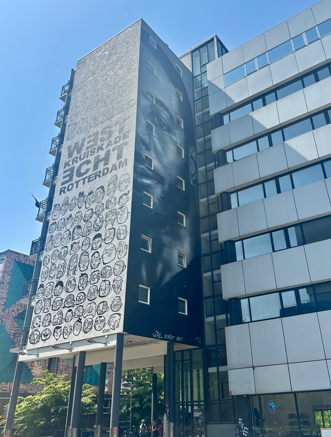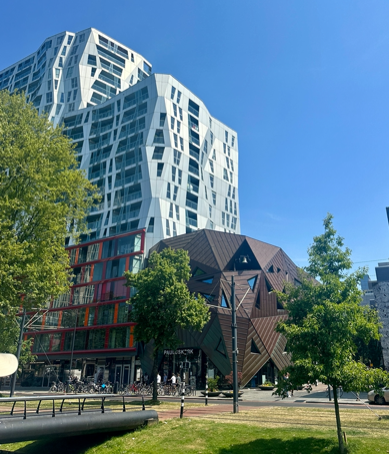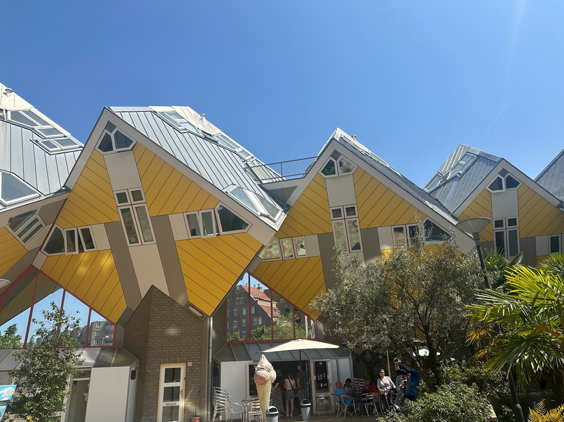Rotterdam: Dynamic Designs and Public Spaces
June 13, 2023
Stepping off the night train from Freiburg to Rotterdam, anticipation ran through my veins. Rotterdam is a city in the Netherlands that has gained recognition for its urban landscape and sustainable architecture. After dropping off the luggage at the hostel, the team went for brunch before the architectural tour. We met up with the tour guides Marley and Renee in front of the railway station. The team was split into two smaller groups, each led by one of the guides.
The tour started with the history of Rotterdam. In the 1940s, there were bomb attacks that destroyed much of the city. With Rotterdam in rubble, architects and urban planners took this opportunity to rebuild from scratch. Without the constraints of existing infrastructure, they were able to embrace innovation and sustainability. Marley discussed how there are two common misconceptions: everything is new and it is new because of the war. While it is true that the attacks did provide an opportunity for renovations, changes were implemented far before the war. Nonetheless, the city’s vision for the future was evident with a mix of architectural styles, both old and new.
The Centraal railway station is an icon of the city and points to the city center. The logic behind the design was to provide ease and efficiency for the passengers. Additionally, it was built to withstand future needs and flexibility for the future. I found this design particularly interesting because it was intended to be a tent-like shape, but then dragged out the edge to cover the train station. Rotterdam is able to include such open layouts because of underground transportation and forward-thinking.
Rotterdam proudly embraces its multiculturalism, with several neighborhoods reflecting the city’s diverse cultural fabric. There is a variety of street art, including a piece using spray paint and another panel depicting the shadow of a face. The cultural expression only adds to the value of the city. From large-scale murals to graffiti, the diversity and talent are spectacular.

As I walked through the streets, I immediately noticed the cutting-edge designs. The architects not only captivate the eye but also demonstrate the power of sustainable design. We walked to the museum park and took a stroll through the park’s green spaces. We stopped at the Depot of Museum Boijmans Van Beuningen. The Depot is a clever architectural work designed to store and display the art of Rotterdam that was not being used in current galleries. It is covered in mirrors, adding dynamics to the city, and the park’s green spaces continue on its green roof. The Depot exemplifies creative solutions to preserving artwork, while also strengthening the community. It is a place where nature and art coincide. The Museum Park embodies Rotterdam’s commitment to creating dynamic public spaces that foster creativity and community engagement.

The canals of Rotterdam add to the vibrant atmosphere. While not as extensive as the canals in Amsterdam, they are still historically significant. They represent the waterways used for trade and communication. Rotterdam also shows the integration of historical heritage with modern sustainability through the Cube Houses. These tilted cubes by Piet Blom were built after World War II and challenged conventional ideas of how houses are built. Additionally, they incorporate sustainable aspects such as green roofs. I find them impressive, if a little scary to live inside.
My architectural tour through Rotterdam left an impression on how urban planning is important for the environment and the community. As other cities began to model Rotterdam’s process, they can look to the iconic landmarks and diversity in art. I had the privilege of touring a city that combines creativity, historical recognition, and design to lead the way for a resilient future for the Netherlands.
About the Author
This article was written by Ashley Titus, UNC class of ’25 as a neuroscience and environmental science major. Connect with her on LinkedIn.
